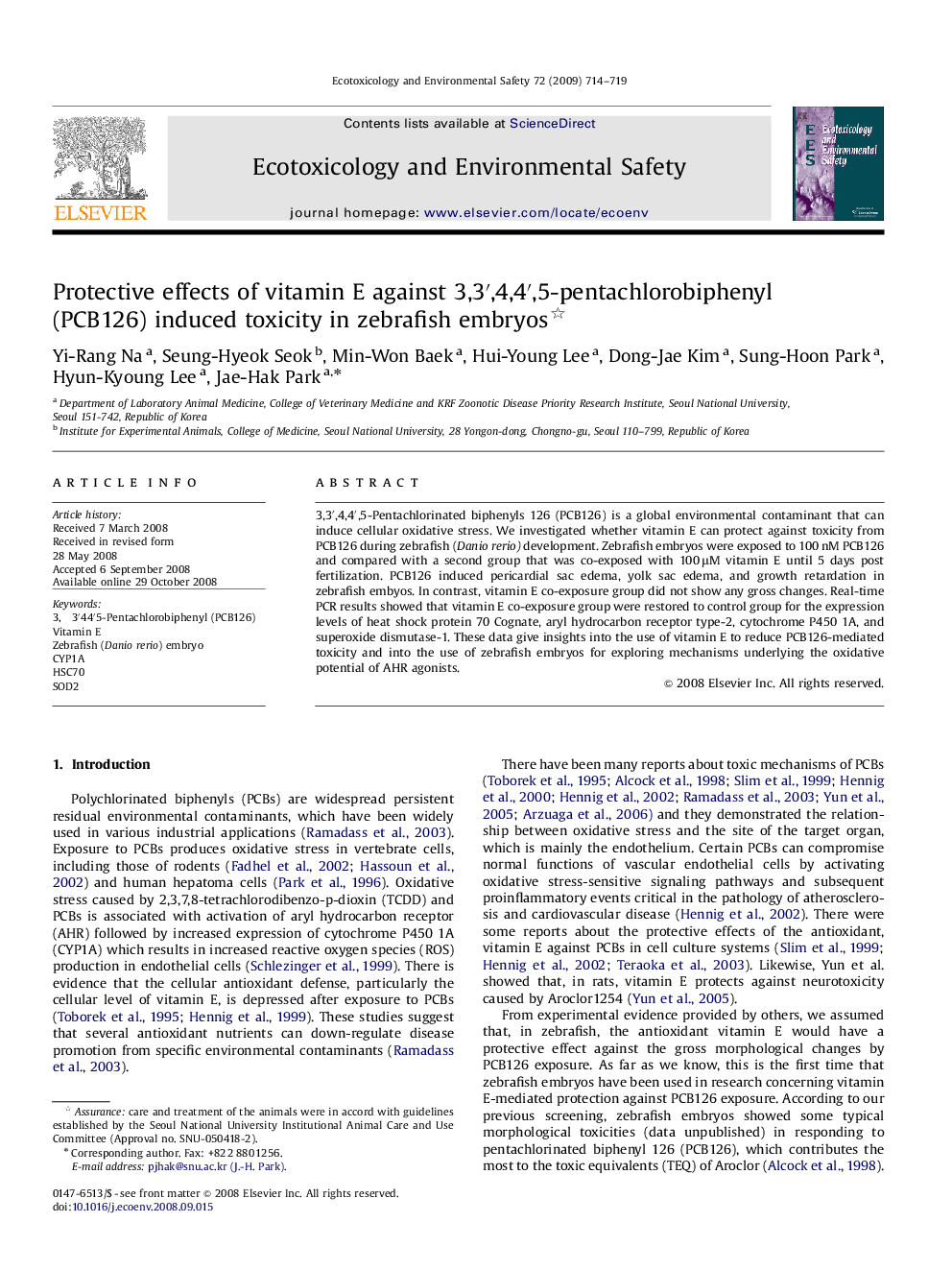| Article ID | Journal | Published Year | Pages | File Type |
|---|---|---|---|---|
| 4421351 | Ecotoxicology and Environmental Safety | 2009 | 6 Pages |
Abstract
3,3â²,4,4â²,5-Pentachlorinated biphenyls 126 (PCB126) is a global environmental contaminant that can induce cellular oxidative stress. We investigated whether vitamin E can protect against toxicity from PCB126 during zebrafish (Danio rerio) development. Zebrafish embryos were exposed to 100 nM PCB126 and compared with a second group that was co-exposed with 100 μM vitamin E until 5 days post fertilization. PCB126 induced pericardial sac edema, yolk sac edema, and growth retardation in zebrafish embyos. In contrast, vitamin E co-exposure group did not show any gross changes. Real-time PCR results showed that vitamin E co-exposure group were restored to control group for the expression levels of heat shock protein 70 Cognate, aryl hydrocarbon receptor type-2, cytochrome P450 1A, and superoxide dismutase-1. These data give insights into the use of vitamin E to reduce PCB126-mediated toxicity and into the use of zebrafish embryos for exploring mechanisms underlying the oxidative potential of AHR agonists.
Related Topics
Life Sciences
Environmental Science
Environmental Chemistry
Authors
Yi-Rang Na, Seung-Hyeok Seok, Min-Won Baek, Hui-Young Lee, Dong-Jae Kim, Sung-Hoon Park, Hyun-Kyoung Lee, Jae-Hak Park,
